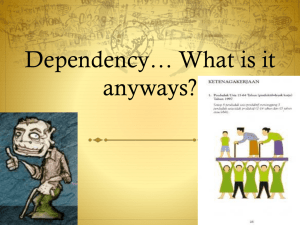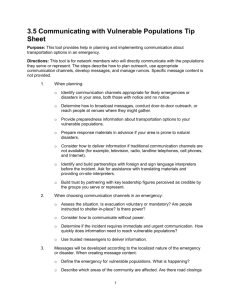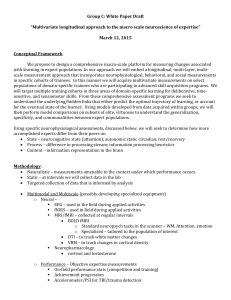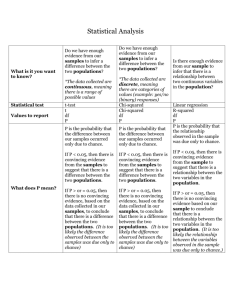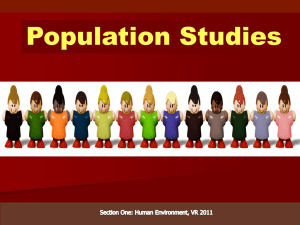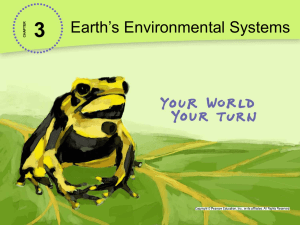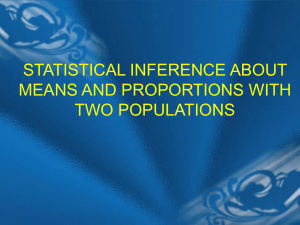Walk the Talk: Creating Powerful Communications with Priority
advertisement
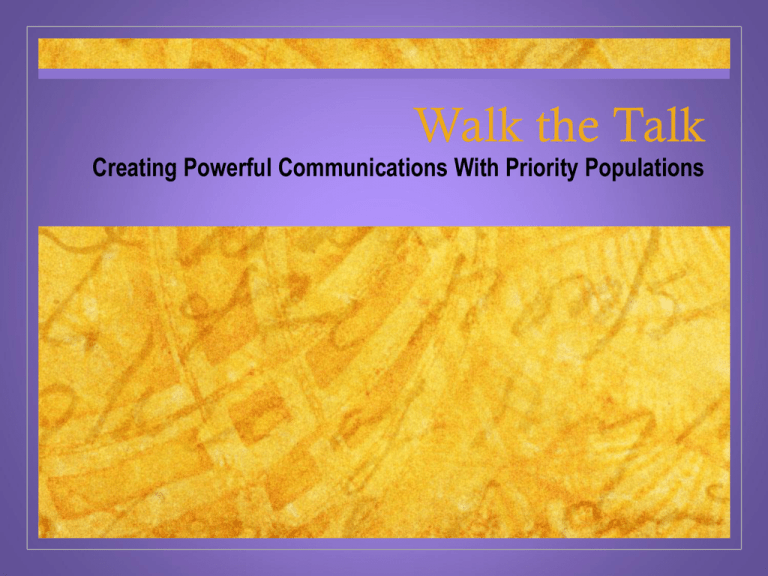
Walk the Talk Creating Powerful Communications With Priority Populations Our Roadmap Welcome and Purpose Getting to Know Your Audience Communications Spectrum Can We Talk? Plan Development Wrap Up Getting to Know You Low SES populations and Hispanic Community outreach Communications planning Public speaking Policy change Message development Coalition building Purpose and Outcomes To gain better understanding of communications styles To share best practices for communicating with priority populations To develop basic template for communications plan Explore why this type of focus is critical Priority Populations Hispanics/Latinos – 32.4% Low SES – 25 % Asians and Pacific Islanders -11.1% African American – 6.4 % LGBT – from 2 to 7% American Indians/Alaskan Natives – 1.0 % DHS Tobacco Documents Priority Populations Smoking Rates American Indian – 32.7% LGBT -30.4% African American – 21.5 % Hispanic – 16.7% Asian – 12.4% ALA/2005 Priority Populations More than 3 million California adults smoke LGBT smoking almost twice that of the general population Military is close to 22 percent, lower the ranking the more smoking Korean men higher than Chinese Priority Populations Less than high school education, increase in smoking Ethnic populations are becoming the majority populations Hispanics are the fastest growing ethnic group in U.S. Disproportionate smoking rates and health effects in some populations Getting To Know Your Audience Beyond identification to knowledge Key to building trust Understanding how the world is viewed Knowing what’s important Building linkages that last Foundation for creating powerful communications Exercise: What Do We Know? Demographics Lifestyle demographics Communication habits How do you currently communicate with the audience? Distinct methods of gaining information Adding to Our Knowledge How did we build the profile? What sources did we use? What sources are missing? Whose voice is missing? Who does the audience trust? What are the community assets? Communications Spectrum: The Landscape Build effective communications foundation Move from me to we Go beyond the familiar Ask questions and listen Make adjustments as necessary Don’t be afraid to fail/succeed Communications Spectrum In the beginning Exploratory Sharing basic information -- fact sheets, Q& A Introducing organization At Mid-point Talk about issues Discuss problems and solutions Form task force, identify agenda Communications Spectrum Mature Relationship Shared agenda More comprehensive communications (signing on policy statements and actions, co-authoring editorials, testifying at hearings) Cross referencing and linking on web site Exercise Where are you on the communications spectrum? How do you rate your current communications with the audience? How can you change/improve? How do you gain access to communities? How can you change/improve? LUNCH Refresh Reflect Relax Reconnect Enjoy Can We Talk? Know your audience Take cultural differences into account Consider the public interest State your most important message first Can We Talk? Keep your messages simple Make your message quotable Use facts and figures……..!? Practice, practice Messages and Vehicles Hispanics and African American youth exposed to more advertising for alcohol Aspiration and acculturation messages Wealth and power Saturated in magazines, radio and television Celebrities, notables, interactive games Festivals, sports/cultural events Exercise: Creating Messages Think in Threes What’s in it for Them and We? What difference will it make? Why should/will we care? What is your headline Exercise: Practice Practice Practice Practice Communications Plan Audience Objective Key message(s) Medium Messenger Evaluate communications Key to Success Reach out Start where they are Know and appeal to people’s interests Build genuine relationship Develop a plan and use it Nurture, sustain and adjust Community Asset Mapping The process of intentionally identifying human, material, financial, entrepreneurial and other resources in community Critical component of communications and coalition building success New initiatives, policy change, mobilization, effectiveness Wrap Up Review outcomes Rapid fire questions Evaluation Walk the Talk Creating Powerful Communications With Priority Populations



